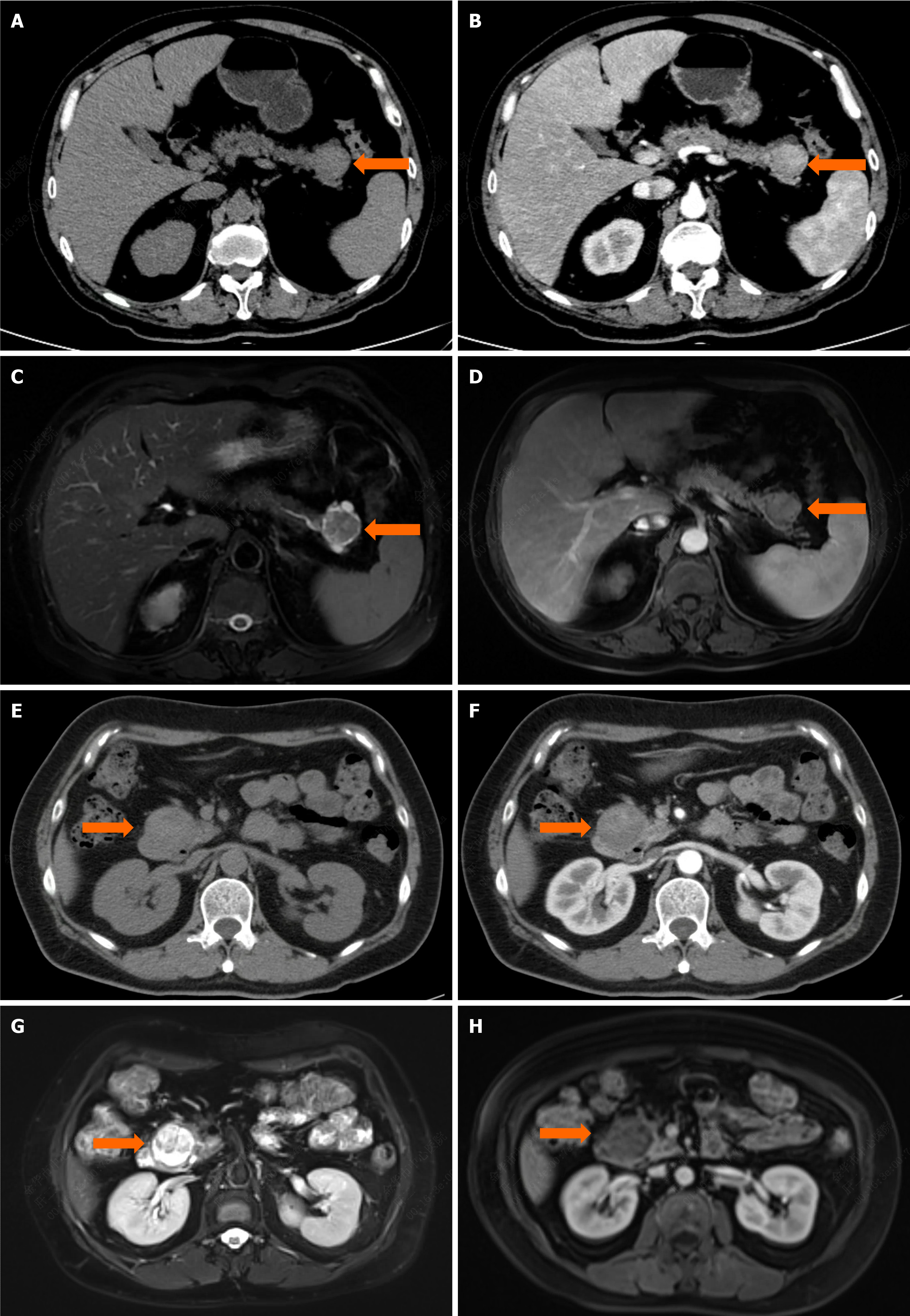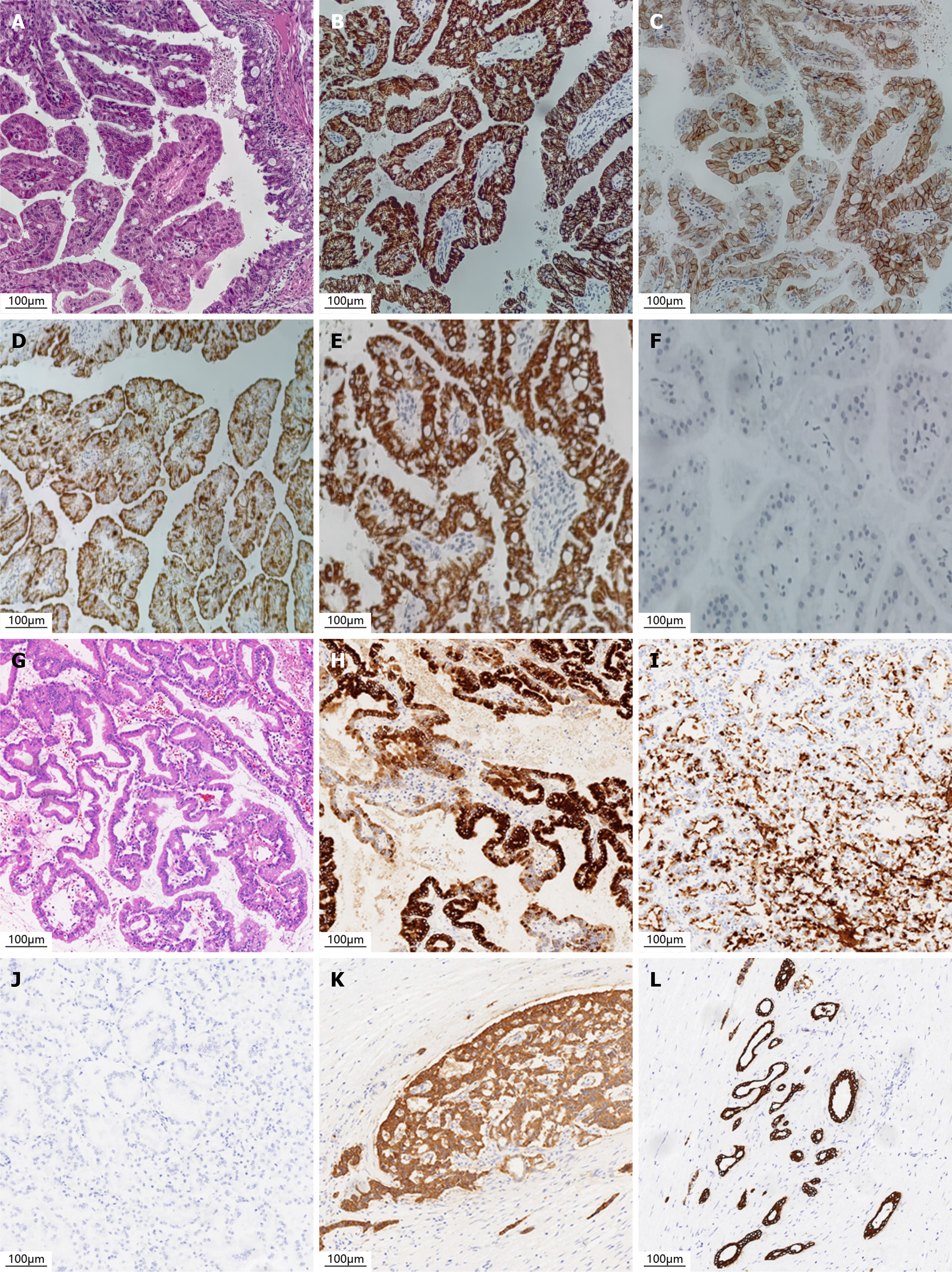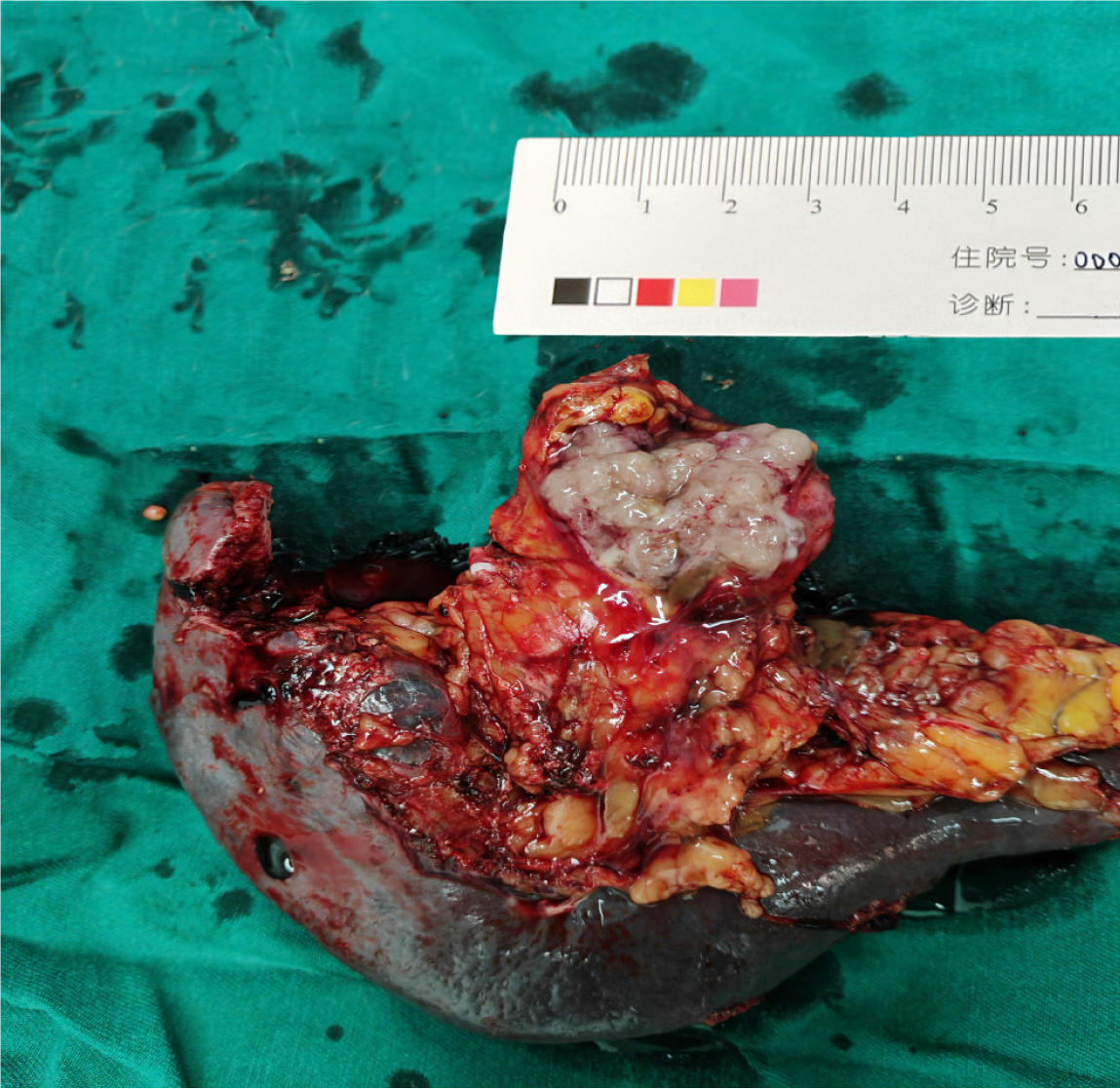Copyright
©The Author(s) 2025.
World J Gastrointest Surg. Apr 27, 2025; 17(4): 105096
Published online Apr 27, 2025. doi: 10.4240/wjgs.v17.i4.105096
Published online Apr 27, 2025. doi: 10.4240/wjgs.v17.i4.105096
Figure 1 Computed tomography and magnetic resonance imaging.
A-D: Case 1; Plain computed tomography (CT) scan shows a round soft tissue shadow in the tail of pancreas with clear boundary and a diameter of 3 cm (orange arrow) (A); Contrast-enhanced CT of abdomen shows a persistent enhancement pattern within the tumor (orange arrow) (B); The T2-weighted image reveals uneven tumor signals, manifesting as a high signal at the edge and a low signal at the center (orange arrow) (C); Contrast-enhanced T1-weighted image clearly displays a mass, with an approximate dimension of 35 mm × 32 mm, that is prominently observable at the pancreatic tail (orange arrow). The solid part of the tumor exhibits enhancement and appears to possess a connection to the pancreatic duct (D); E-H: Case 2; Plain CT scan shows a nodular slightly higher density lesion in the pancreatic-duodenal space, with a clear boundary. The tumor diameter is approximately 3.5 cm (orange arrow) (E); Contrast-enhanced CT of abdomen shows an unevenly enhanced tumor with marked enhancement in the arterial phase, followed by a reduction in enhancement, and an indistinct boundary with the local part of the duodenum (orange arrow) (F); The T2-weighted image reveals that the majority of the tumor exhibits a high-intensity signal, whereas the central portion displays a low-intensity signal (orange arrow) (G); Contrast-enhanced T1-weighted image clearly shows significant edge enhancement (orange arrow) (H).
Figure 2 Hematoxylin-eosin stain and immunohistochemical results.
A-F: Case 1; Hematoxylin-eosin stain of intraductal oncocytic papillary neoplasm (IOPN) (magnification: × 100) (A); Immunohistochemical results show that the tumour cells are positive for hepatocyte paraffin 1 (B); Cluster of differentiation 117 (C); MUC5AC (D); MUC6 (E); Negative for MUC2 (magnification: × 100) (F); G-L: Case 2; Hematoxylin-eosin stain of IOPN (magnification: × 100) (G); Immunohistochemical results show that the tumour cells are positive for MUC6 (H); MUC5AC (I); Negative for MUC2 (J); Positive for synaptophysin (K); Cytokeratin pan (magnification: × 100) (L).
Figure 3 The surgical specimen after resection (case 1).
The tumor is grayish-white to the naked eye, with a maximum diameter of 3.5 cm.
- Citation: Wu GZ, Lu LN, Lin HP, Wang XY, Yu SA, Yu M. Laparoscopic management of intraductal oncocytic papillary neoplasm of the pancreas: Two case reports and review of literature. World J Gastrointest Surg 2025; 17(4): 105096
- URL: https://www.wjgnet.com/1948-9366/full/v17/i4/105096.htm
- DOI: https://dx.doi.org/10.4240/wjgs.v17.i4.105096















